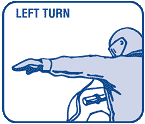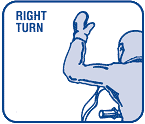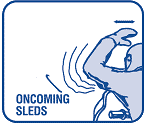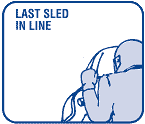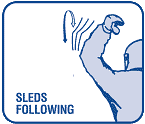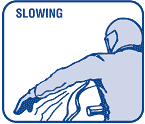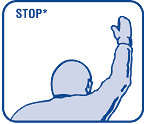Night Riding
A disproportionate number of snowmobiling incidents, including nine out of ten fatalities, occur after dark.
Forward visibility is reduced by darkness and it is much more difficult to spot and identify potential hazards in time. Overdriving headlights can also be a serious problem, so slow down when snowmobiling after dark. Becoming disoriented or lost is much more likely at night. Ride with individuals familiar with the area.
Always wear outer clothing with reflective trim on the arms, back and helmet. Never ride alone at night. Always dress in your full snowmobiling outfit even if your intended destination is just next door.
Be certain that all lights are operational and keep in mind that hand signals become increasingly more difficult to see as darkness sets in.

